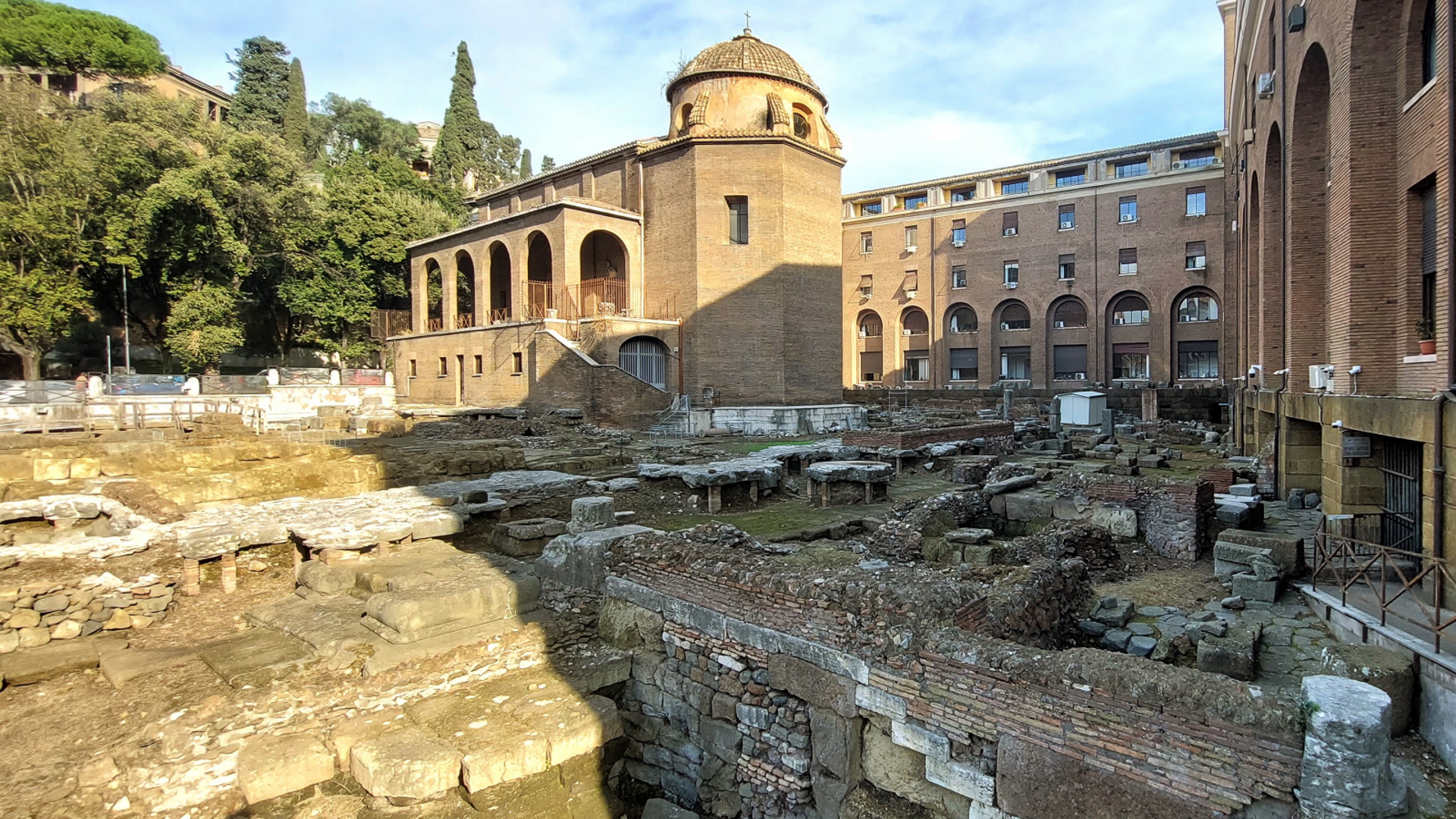
Often unjustly overlooked although it is visible even from the street, the archaeological area between the Capitoline Hill and the Forum Boarium represent an important testimony to Archaic and Republican Rome. Its discovery was accidental: in the 1930s, works for the construction of the Via del Mare and new buildings brought to light a large slab of tufa blocks, above which stood the remains of two temples dating from the Republican period.
Later investigations revealed an even more complex stratigraphic sequence, with the remains of a hut datable to the 8th century B.C. and the subsequent creation of a worship area with altars and animal bone remnants, from which came a fragment of a vase with an Etruscan inscription, perhaps the oldest found in Rome. The monumental transformation of the area took place in 580 B.C. with the construction of two temples, one of which was found underground: the large terracotta slabs, the four volutes and the statuary group of Heracles and Athena, placed to decorate the pediment and now preserved in the Capitoline Museums, refer to this ancient Etruscan-Italic temple.
The temple was destroyed at the end of the 6th century B.C., when the abrupt and violent political and institutional changes brought Rome from monarchy to republic. Then, after a century of neglect, the level of the area was raised by almost 4 meters for the construction of two twin temples, identified with those of Fortuna and Mater Matuta based on literary sources, and with a slightly different orientation from the archaic temple. We know that the temples were restored under Emperor Hadrian’s reign (117-138 AD) and remained in use until at least the Severan age, at the beginning of the 3rd century AD. Only the temple of Fortuna is currently visible in the area; the cell of Mater Matuta temple was reused as early as late antiquity as a building for Christian worship. Mentioned in documents as San Salvatore in Portico, the church was rebuilt in the late 15th century and dedicated to St. Omobono, protector of tailors.
Information
Admission to the monument is allowed to groups and associations, with their own guide, who must make a reservation at 060608 (daily, 9.00 - 19.00).
Maximum 15 people per visit.
For individual visitors, who must also make a reservation at 060608, individual visits are also possible according to a schedule specified on the page > Monumenti del territorio
The monument is also visible from the outside and is not accessible to the disabled
 Condividi
Condividi
Location
To find out about all accessibility services, visit the Rome accessible section.












































